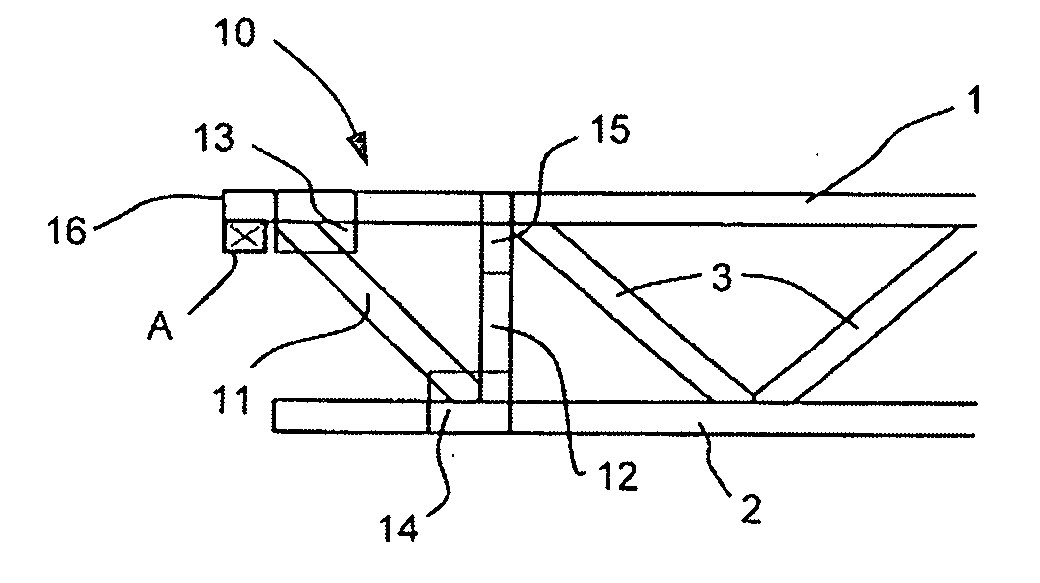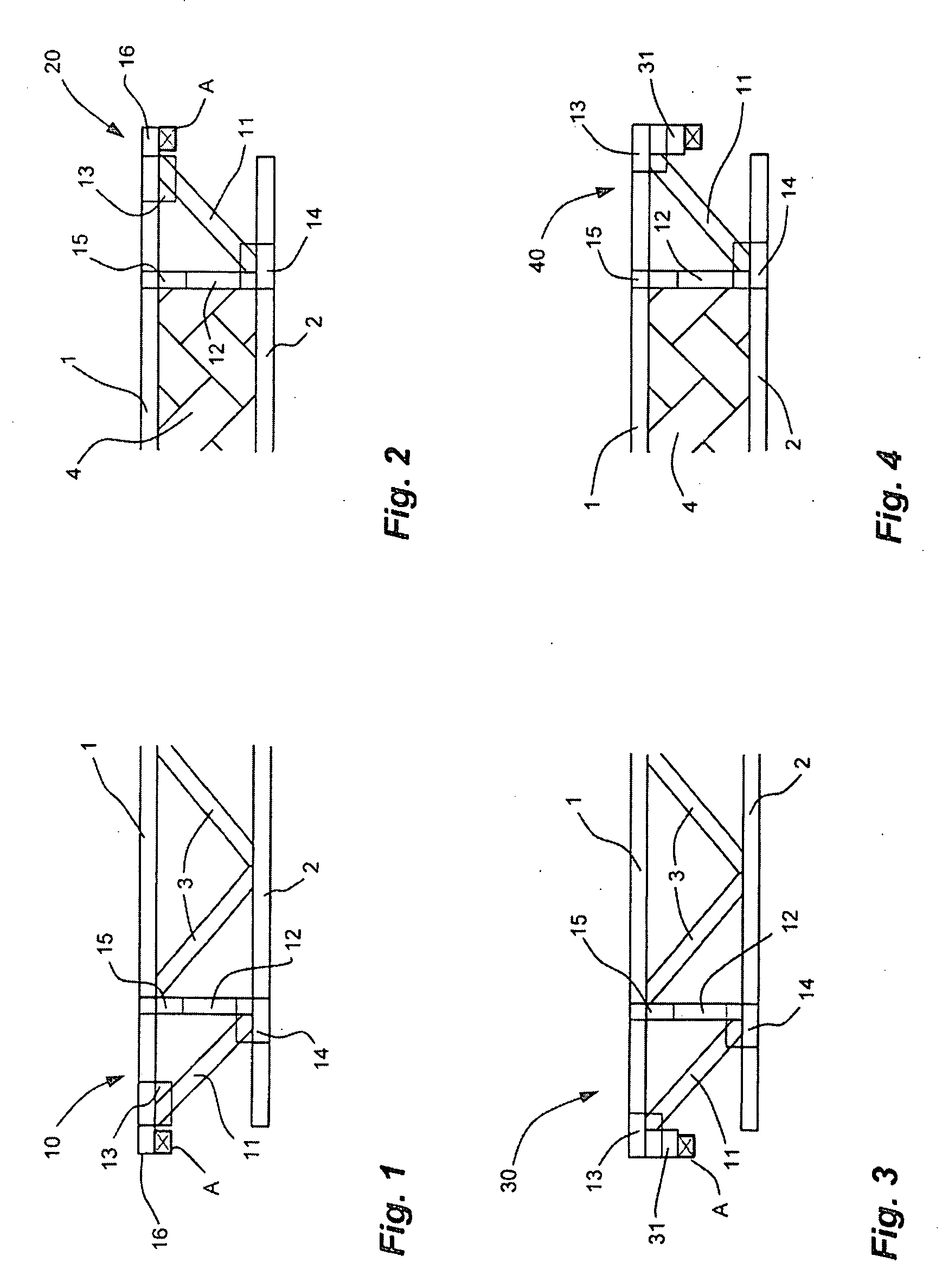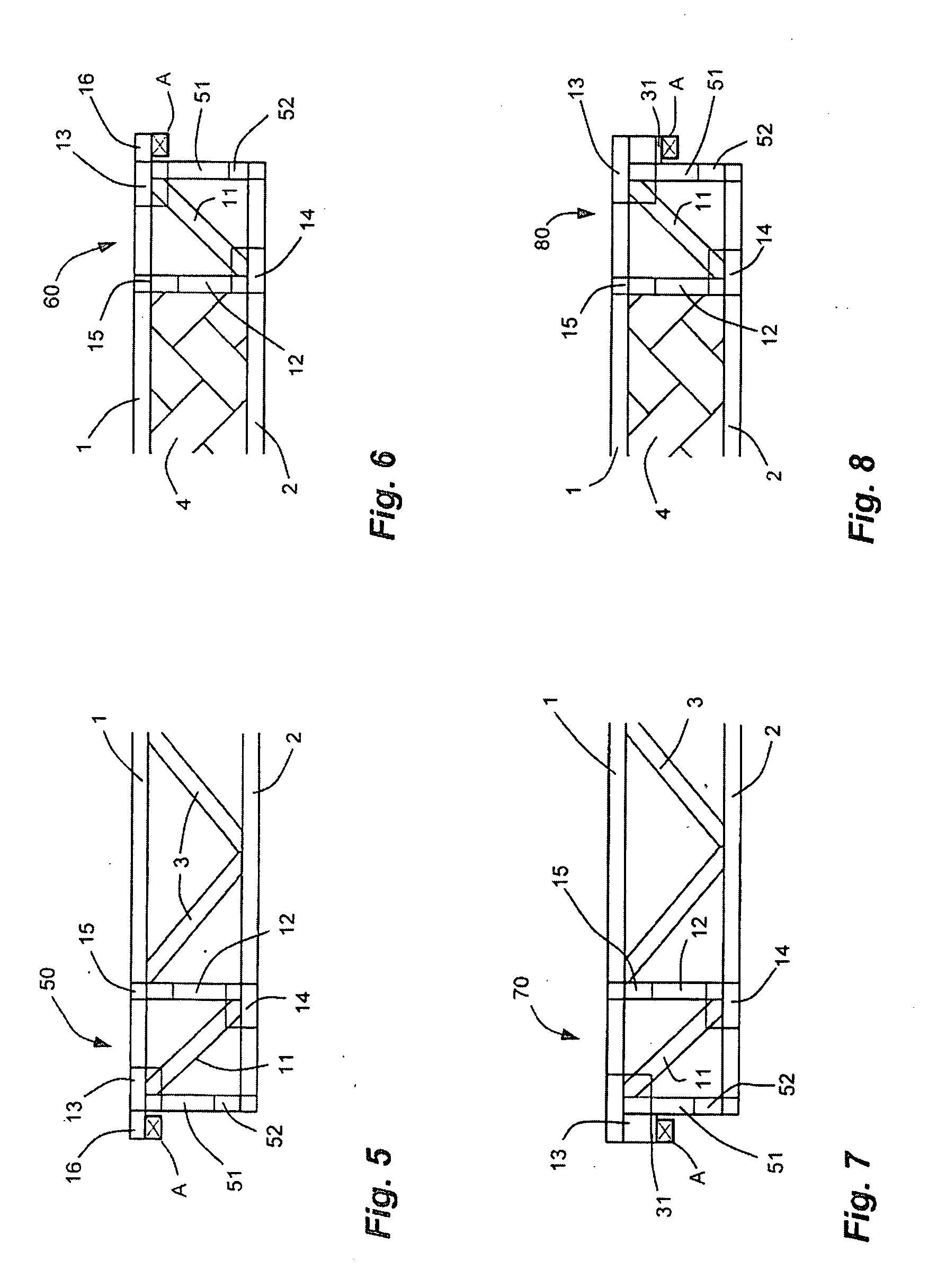Top-chord bearing wooden joist and method
a top-chord bearing and joist technology, applied in the field of wooden joists, can solve the problems of high and high cost of both open joists, and achieve the effect of reducing the cost of hanging brackets and reducing the cost of installation and maintenan
- Summary
- Abstract
- Description
- Claims
- Application Information
AI Technical Summary
Problems solved by technology
Method used
Image
Examples
Embodiment Construction
[0030]Referring to the drawings, and more particularly to FIGS. 1 to 19, joist-end configurations are illustrated at the ends of joists comprising a top chord 1, a bottom chord 2, and a main section of joist comprising at least one of an open-joist subsection of wooden webs 3 (FIG. 1), and an I-joist subsection of wooden boards 4 (FIG. 2). Reference numerals 1 to 4 are used hereinafter to refer to these components. The joists of FIGS. 1-19 are said to be all-wooden, in that the top chord 1, the bottom chord 2, the open-joist subsection of wooden webs 3 and the I-joist subsection of wooden boards 4 are interconnected by an adhesive, and complementary joints (e.g., finger joints).
[0031]Referring to FIG. 1, a first joist-end configuration is illustrated at 10, at the end of an open-joist section of a joist. The first joist-end configuration 10 has a diagonal 11 (a.k.a., an end web) and a post 12 (i.e., column) between the top chord 1 and the bottom chord 2. The diagonal 11 is connected...
PUM
 Login to View More
Login to View More Abstract
Description
Claims
Application Information
 Login to View More
Login to View More - R&D
- Intellectual Property
- Life Sciences
- Materials
- Tech Scout
- Unparalleled Data Quality
- Higher Quality Content
- 60% Fewer Hallucinations
Browse by: Latest US Patents, China's latest patents, Technical Efficacy Thesaurus, Application Domain, Technology Topic, Popular Technical Reports.
© 2025 PatSnap. All rights reserved.Legal|Privacy policy|Modern Slavery Act Transparency Statement|Sitemap|About US| Contact US: help@patsnap.com



